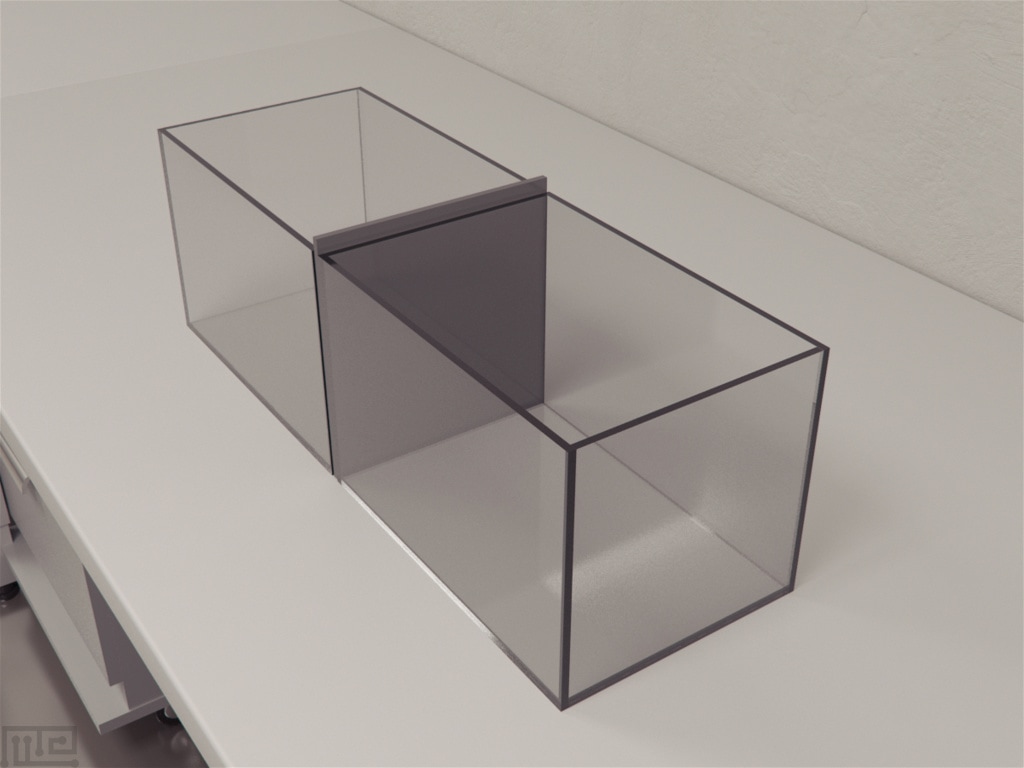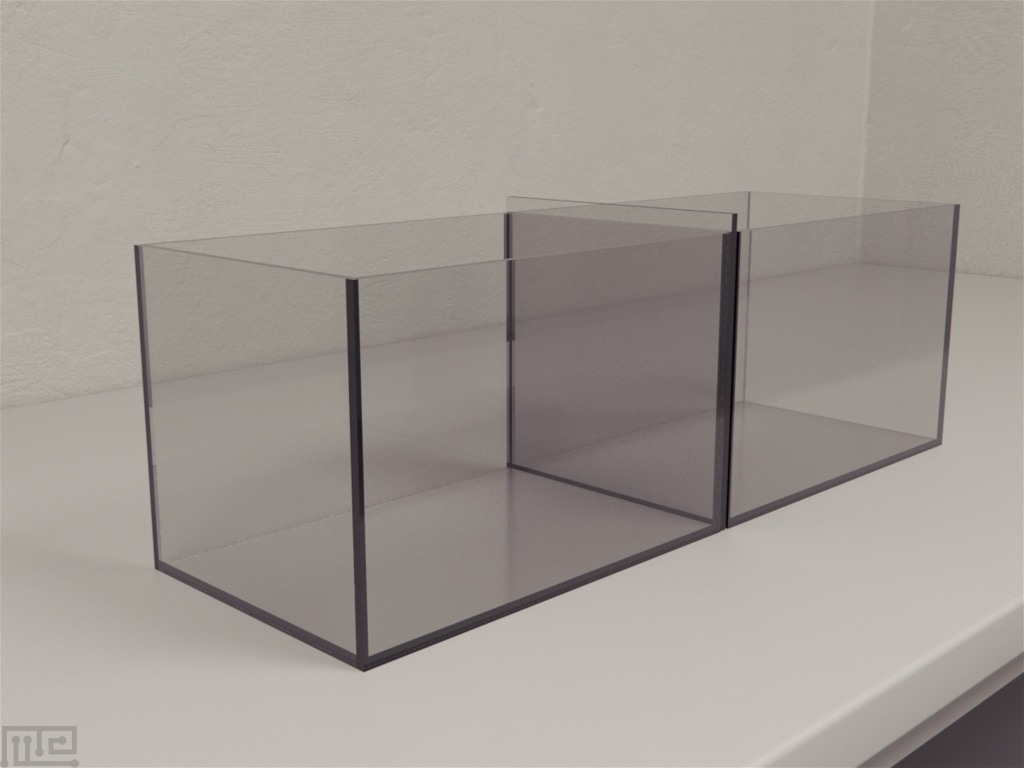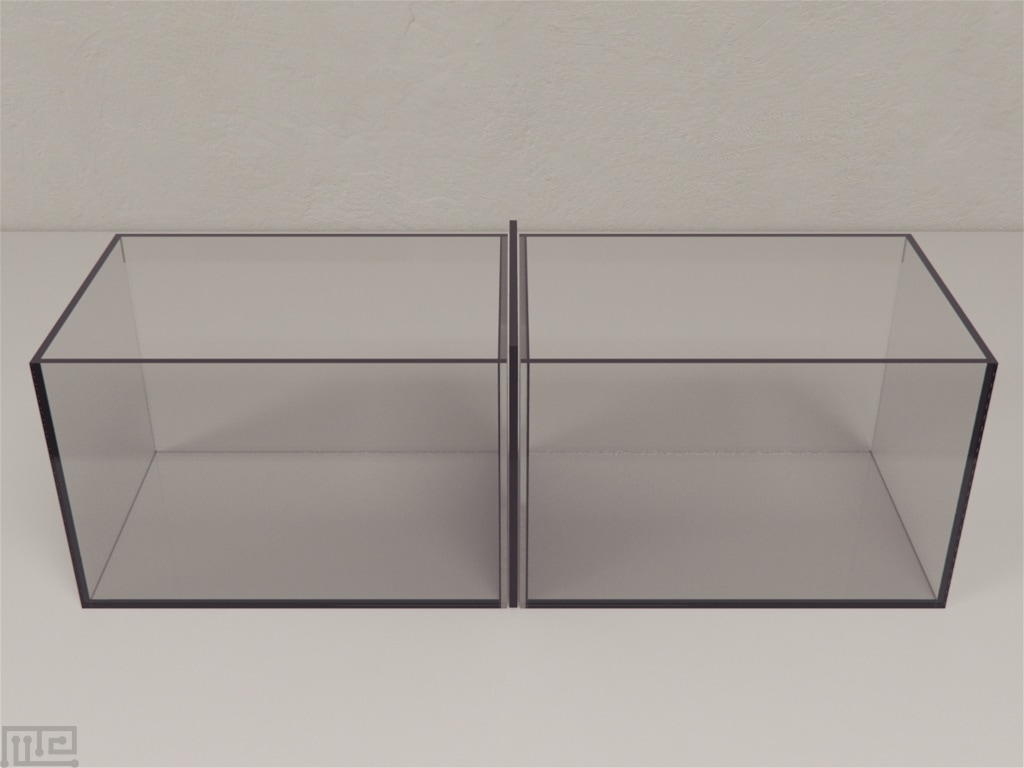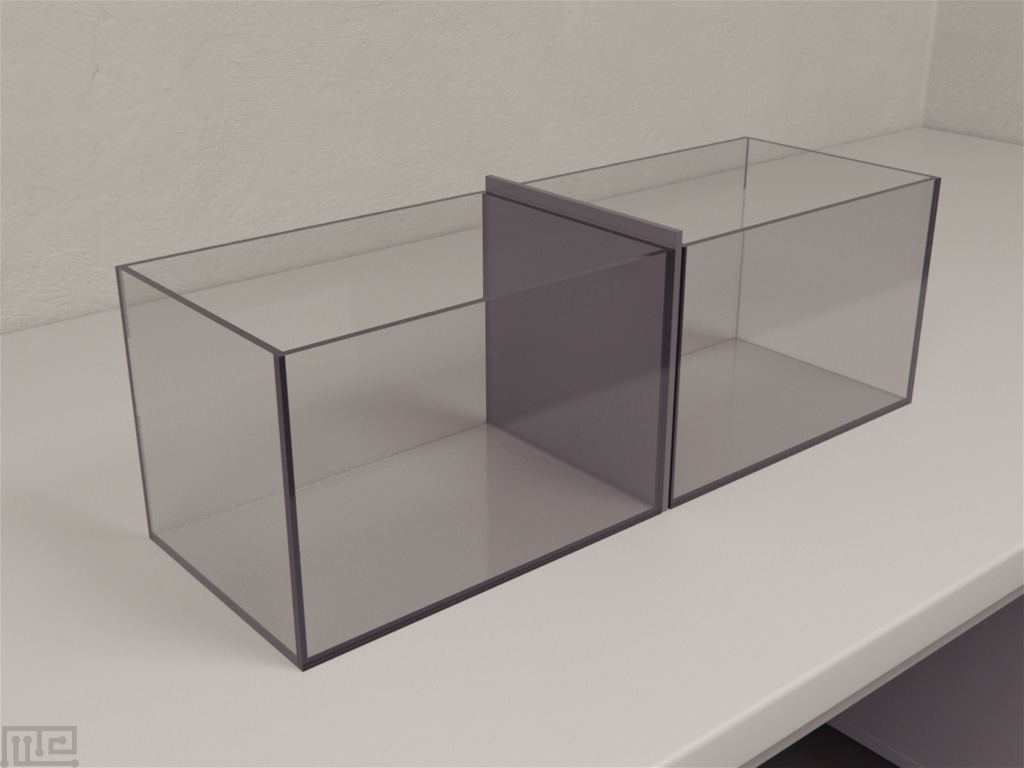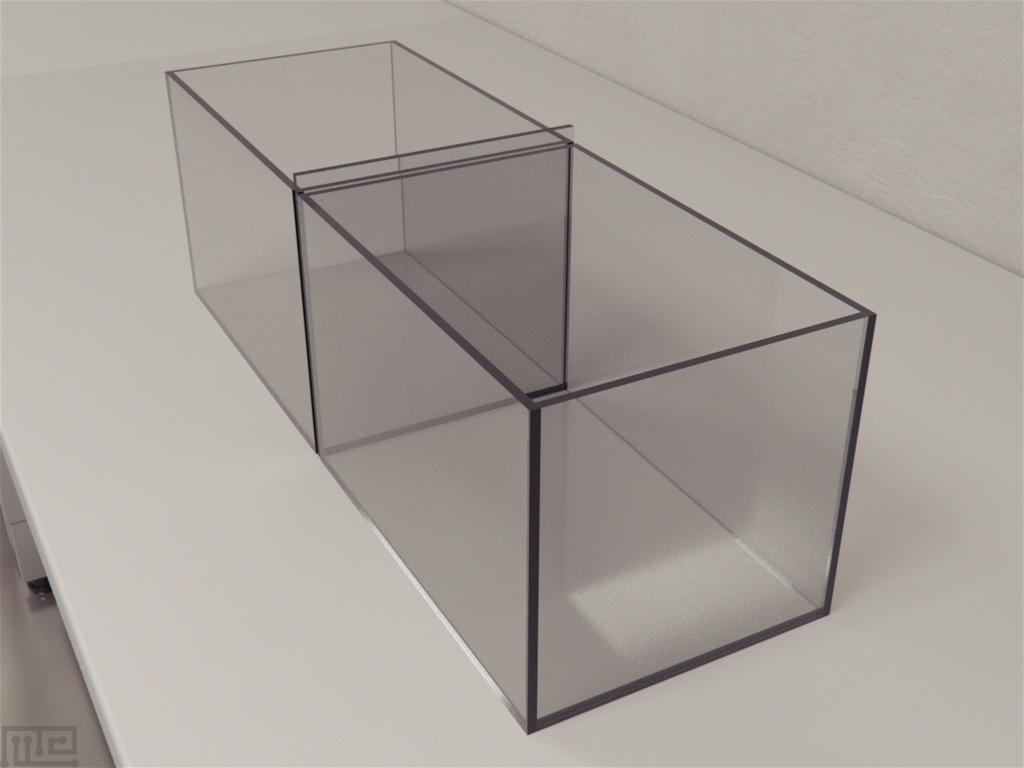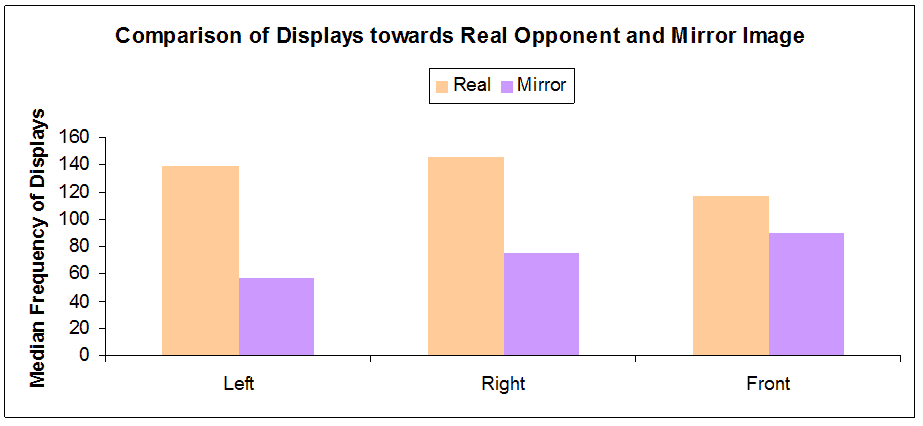Description
Mirror tests are a popular method used in studies of agonistic interaction, especially in fish aggression studies as they require fewer participants and avoid pseudo-replication. Mirrors also provoke a strong, aggressive response in the subject without endangering them. MazeEngineers offers multiple models of the mirror biting test , as not clear standard has emerged from the literature.
Introduction
Mirror tests are a popular method used in studies of agonistic interaction, especially in fish aggression studies as they require fewer participants and avoid pseudo-replication. Mirrors also provoke a strong, aggressive response in the subject without endangering them. Mirror test serves as a simple approach to understanding the evolution of mutual cooperation and information exchange in agonistic encounters and the role of lateralization. The bite test shows that zebrafish involves lateral display bias to their right side using right eye (Miklosi and Andrew, 1999). The mirror test helps investigate the significance of lateral displays between a real opponent and against a mirror.
Elwood’s mirror test apparatus includes two individual holding tanks, which are identical in their conditions, separated by a removable grey opaque partition that visually isolated the fishes (convict cichlids) in the tanks from each other. The partition could be used to expose the real opponent or replaced with a mirror.
Apparatus and Equipment
The tanks of dimensions 30 x 20 x 20 cm serve as both the holding tank and the experimental setup. A grey opaque divider acts as a visual block for the subjects in the tanks. During the experimental process requiring a mirror, the opaque divider is replaced with a 20 x 20 cm mirror. The usage of individual tanks avoids the ethical concerns associated with transferring the subjects between test sessions and causing any physical harm.
Training Protocol
The subjects are housed individually in their holding tanks aligned end to end separated by a grey opaque visual divider. Each tank can be lined with gravel with an approximate depth of 2 cm. The subjects are maintained in a 12:12 hour light/dark cycle at a depth of 15 cm in aerated water. The temperature of the setup is maintained at approximately 27oC. The subjects are fed every other day and after observation on the day of experimentation. The subjects are kept isolated for 1 to 2 weeks prior to the experimentation. The experimentation process takes place in a disturbance-free setup and is recorded using an automated video tracker Noldus Ethovision XT.
The subjects are tested for two hypotheses, one in which the focal subject faces a real opponent, and in the other, a mirror replaces an opponent to observe the response of individual display and lateral display (Elwood et al., 2014). The experiments are carried out twice for each subject without pseudo-replication. A gap of 10-15 minutes is maintained between each test.
For observation with a real opponent, the focal subject is exposed to stimulus subject on the right by the removal of the opaque divider. The subjects are observed for 30 minutes. For the mirror based experiment, the divider is removed and immediately replaced with the mirror.
Sample Data
During the experiments, focal subject activities were recorded for right and left lateral displays and frontal displays. When the subject was displaying its right lateral side at an angle of 45o or less to the glass at the end of the tank closest to the mirror or opponent, it is recorded as a right lateral display. Similarly, left lateral display is recorded when the subject perfers left lateral side. A front display is recorded when the subject was head-on to the glass, that is at an angle greater than 45o. The data is also recorded for the frequency of display and duration of each display.
Analysis revealed that real opponents evoked more displays and total duration of displays than a mirror.
Strengths & Limitations
Strengths
Mirror biting tests don’t require a large sample size since each subject used is a focal subject. The ethical and welfare concerns often associated with experiments are also avoided as the holding tanks also function as the experimental setup. Mirror tests serve as a simple, straightforward and inexpensive method for studying the agonistic encounters in fishes.
Limitations
Although the mirror biting test allows some understanding of lateral displays and contest interactions, its effectiveness is debatable since mirror evoked behaviors do not mimic conspecific-driven behaviors and physiological responses.
Summary and Key Points
- The subjects are housed individually in holding tanks, which also functioned as the experimental setup, thereby avoiding any ethical concerns
- The subjects are observed for lateral display when subjected to a real opponent and a mirror
- The subjects are isolated for 1-2 weeks prior to the experiment to minimize the influence of prior wins or loss
References
- Miklosi A, Andrew RJ. (1999) Right eye use associated with decision to bite in Zebrafish : Behavioral Brain Research
- Robert W. Elwood, Velizara Stoilova, Amy McDonnell, Ryan L. Earley, Gareth Arnott. (2014). Do mirrors reflect reality in agonistic encounters? A test of mutual cooperation in displays. Animal Behaviour 97, 63-67

